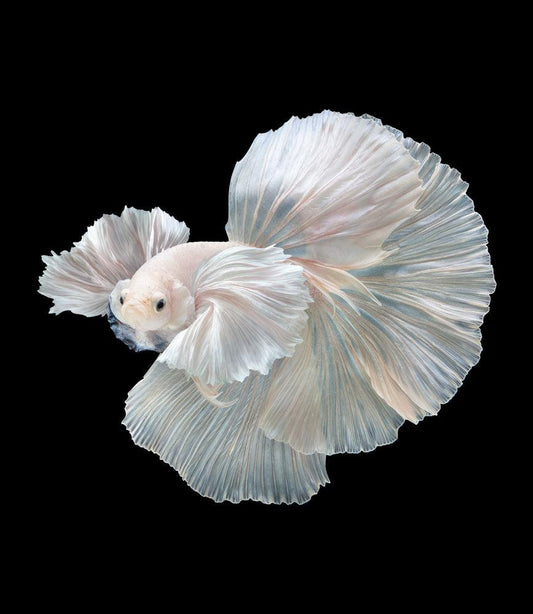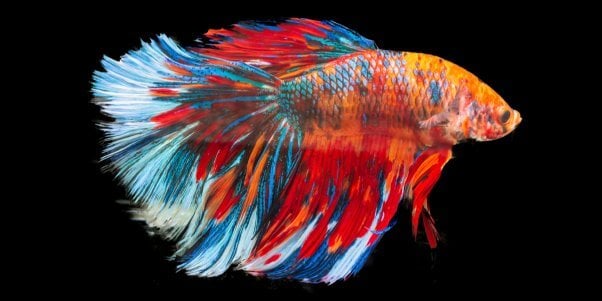Betta Fish Care: Essential Tips for a Healthy and Pleased Family Pet
Breeding Betta Fish: a Comprehensive Step-By-Step Overview to Successfully Raising Infant Bettas From Eggs to Their Adult Years
Breeding Betta fish is a precise undertaking that calls for cautious planning and execution to make certain the successful growth of fry from eggs to mature fish. Choosing genetically varied breeding sets with desirable attributes is only the beginning; developing an optimum environment and comprehending the details of the breeding process are just as essential. As the male Betta carefully constructs a bubble nest and guards the priceless eggs, the subsequent stages of care and shift need attention to detail and understanding of finest techniques. Just how does one navigate the challenging yet satisfying course of supporting these vivid creatures to adulthood?

Selecting Breeding Pairs
When embarking on the trip of reproducing Betta fish, selecting the best breeding pairs is vital to achieving preferable attributes and a healthy family tree - betta fish. The very first step in this procedure is to recognize the specific traits you wish to boost or protect, such as color, fin type, and body shape. It is crucial to select genetically diverse sets to avoid inbreeding, which can bring about health and wellness concerns and unfavorable characteristics
Review potential breeding candidates carefully. A healthy male Betta must exhibit lively colors, an active disposition, and well-formed fins, while the lady should likewise present vibrant coloration and a rounded stubborn belly, indicating preparedness for spawning. Observing the temperament of both fish is important, as aggressive or excessively reluctant individuals might not breed efficiently.
Documentation of lineage is just as important. Keeping documents of the moms and dad fish's origins can assist you track hereditary attributes and potential problems. Furthermore, get in touch with reputable breeders or online sources for guidance on selecting compatible pairs. Ultimately, investing time in the option process will substantially boost the possibility of creating solid, lively spawn that fulfill your reproduction goals (betta fish).

Preparing the Breeding Storage Tank
Creating an ideal reproduction setting is a crucial step after selecting ideal pairs for Betta fish. The reproduction storage tank should be especially created to offer convenience and promote the natural reproduction habits of the fish. Begin with a container dimension of a minimum of 10 gallons to make certain sufficient area for both the man and female Bettas.
Maintain a mild filtration system to maintain the water clean while preventing solid currents that can worry the fish. In addition, an air rock can be included in give oxygenation without interrupting the water surface area way too much.
Temperature law is important; aim for a steady series of 78-82 ° F(25-28 ° C) using a reliable heating unit. The pH degree should be preserved in between 6.5 and 7.5, and regular water modifications are essential to guarantee high water top quality.
Incorporate floating plants or generating sponges to create hiding areas for the lady, while also motivating bubble nest structure by the man - betta fish. Make sure the container is cost-free from sharp decorations and any prospective risks, as the well-being of the fish must always be focused on during this important stage of reproduction.
The Reproduction Process
Commonly, the reproducing process for Betta fish entails a series of distinct and visible behaviors that show readiness for reproduction. The male Betta begins by building a bubble nest at the water's surface area, which functions as a site for the fed eggs. This nest is essential, as it supplies a safe setting for the eggs until they hatch out.
Once the nest is developed, the man will show courtship habits, such as flaring his fins and displaying dynamic colors to attract the woman. The female, upon noticing the male's readiness, will respond by showing upright stripes along her body, signifying her receptiveness.
When the women techniques, the male participates in a breeding dance, typically bring about a welcome called the "spawning." During this accept, the lady releases her eggs, which the male feeds right away. The fertilized eggs then fall to the bubble nest, where the male thoroughly gathers and returns them to the nest. Following this, the male thinks responsibility for securing the nest and making sure the check this site out safety of the eggs until they hatch, generally within 24-36 hours. This stage is critical in the reproducing procedure, laying the foundation for effective fry growth.
Caring for Betta Fry
Looking after Betta fry needs mindful interest to their environment and nourishment to guarantee healthy and balanced development and development. After hatching out, Betta fry are exceptionally small and at risk, requiring a secure and tidy habitat. Keeping a water temperature in between 78 ° F and 80 ° F is vital, as Betta fry flourish in warm problems. Furthermore, make certain that the water is without damaging toxic substances; routine water modifications of 10-20% are advised to maintain optimum water top quality.
Feeding Betta fry is equally vital. Feed them little amounts a number of times a day, being cautious not to overfeed, which can lead to water high quality concerns.
Transitioning to Grownup Bettas
As Betta fry mature, transitioning them to grown-up Bettas is an essential stage that calls for cautious administration of their setting and social communications. This process normally begins when the fry reach around 6 weeks old, at which check my site factor they can be slowly introduced to an extra organized living atmosphere.
To facilitate this shift, it is vital to make certain that the water specifications-- such as temperature, pH, and ammonia degrees-- are optimal and steady. Adult Betta fish prosper in warm water (around 78-80 ° F) with a pH of 6.5 to 7.5. Progressively adjust the fry to these problems to reduce stress and anxiety.
Social interactions are an additional essential variable; male Bettas are infamously territorial and aggressive. As a result, it is advisable to different men into specific tanks as they develop. this Female Bettas can be housed with each other, but care should be taken to check for indications of aggressiveness.
Furthermore, nutritional modifications should be made as the fry grow. Integrate premium pellets and live foods to support their development and health. By taking care of these elements efficiently, you can promote a successful shift to the adult years for your Betta fish.

Verdict
Successful reproduction of Betta fish needs mindful interest to detail throughout the whole process, from picking genetically diverse sets to offering optimal treatment for fry. Additionally, a well balanced diet and steady adaptation to grown-up environments are critical for the growth and growth of Betta fish.